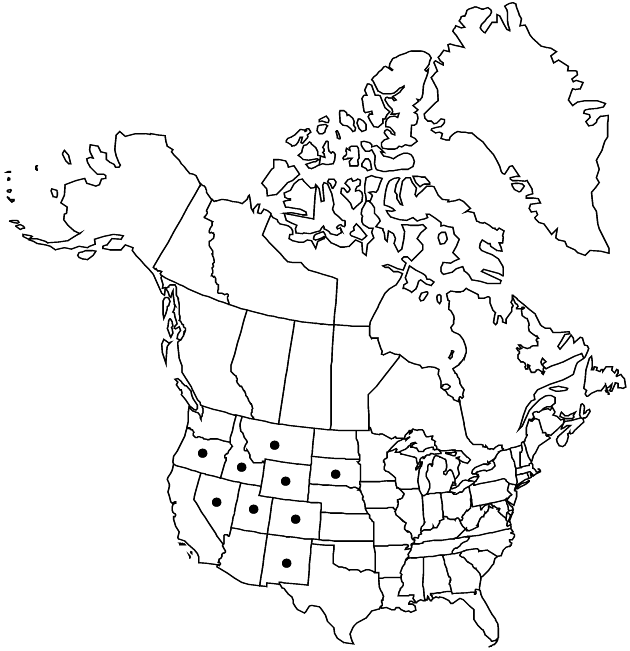Senecio crassulus
Proc. Amer. Acad. Arts 19: 54. 1883.
Synonyms: Senecio lapathifolius GreeneSenecio semiamplexicaulis Rydberg
Revision as of 00:30, 27 July 2019 by FNA>Volume Importer
Perennials, (15–)20–50(–70) cm (rhizomes branched, ± woody). Herbage glabrous. Stems 1–(2–4). Leaves (thickish-turgid) progressively reduced distally; petiolate; blades broadly lanceolate to subelliptic, 2.5–15 × 1–5 cm, bases tapered, margins sharply dentate to subentire (some teeth callous; mid leaves sometimes larger than proximal; distal leaves sessile, smaller, often clasping). Heads (1–)4–12 in corymbiform arrays. Calyculi of (1–)3–6 linear to filiform bractlets (lengths to 1/3 phyllaries). Phyllaries (± 8) ± 13 or ± 21, 5–9 mm, tips black (villous). Ray florets ± 8 or ± 13; corolla laminae 5–12 mm. Cypselae glabrous. 2n = 40.
Phenology: Flowering summer.
Habitat: Moist to drying hillsides, meadows, other open places in forest associations
Elevation: 2200–3700 m
Distribution

Colo., Idaho, Mont., Nev., N.Mex., Oreg., S.Dak., Utah, Wyo.
Discussion
Selected References
None.
Lower Taxa
None.